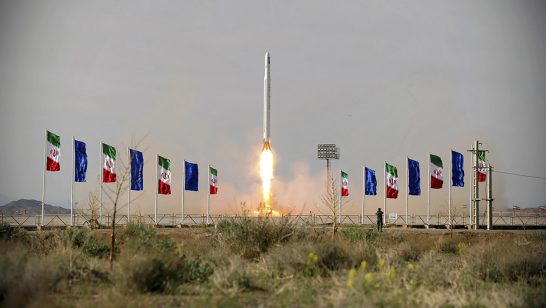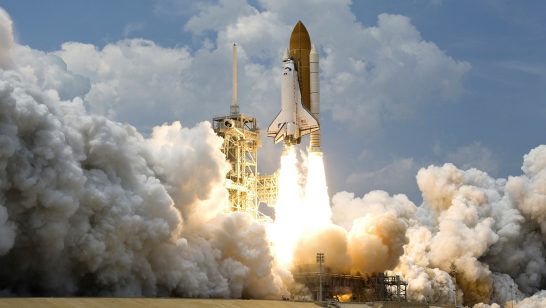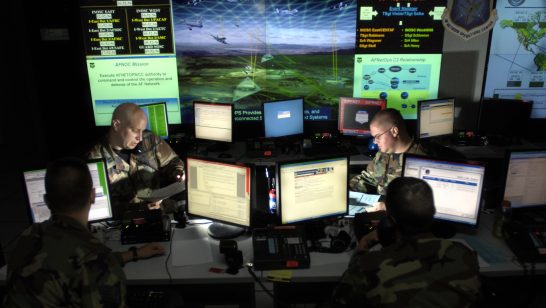
Different actors are pursuing a range of different goals in space, enabled by the same trends such as the falling costs of satellite production and launch, as well the expanding opportunities and benefits from their use.
In May 2020, SpaceX flew its first-ever human spaceflight mission, transporting NASA astronauts Doug Hurley and Bob Behnken to the International Space Station (ISS). This mission is exemplary of a trend in space: increasingly, commercial space companies and states working together to reduce the cost of access to space. Notwithstanding the increased role of new actors, there are currently very few effective regulatory structures that dictate how state and non-state actors can or should work together.
An increasingly congested, contested and competitive space environment
While ‘traditional’ civil space-faring actors such as the United States and Russia are still prominent, the last decade has witnessed a plethora of new government actors including the European Space Agency (ESA), China, India, the UK, Japan as well as commercial actors such as SES, Globalstar and ORBCOMM acquiring and operating assets in space.
Not only are these actors differentiated by their history and availability of resources, but also by their mindsets. The former are motivated by national interests such as enabling public services, critical infrastructure, national security and scientific exploration. The latter are driven by commercial interests, with the aim of capitalising on market opportunities to make a profit. This translates into varying levels of risk tolerance with ramifications for the future of the orbital environment.
Given that states no longer have a monopoly over launching spacecraft, this has contributed to a growing number of objects in space. The US Space Surveillance Network is currently tracking approximately 23,000 on-orbit objects. Over 30 percent of tracked man-made objects in space since 1960 were launched in the last decade alone.
Increasing reliance on space-based critical infrastructure
The increased utilisation of space is connected to our growing societal dependence on space-based infrastructure for a range of services including positioning, navigation, timing, telecommunications, Earth observation and more. Even nations without space programmes are reliant on space-based critical infrastructure, meaning that they too need to be considered in any regulatory processes. As our dependence on satellites increases with the surge in Internet of Things, self-driving cars, and other applications, so too does the size of the global space industry market. In 2018, it was valued at US$360bn and is projected to grow to US$558bn by 2026.
These projections illustrate that the trend towards launching objects into space shows no signs of abating. At the same time, the variety, scale and number of space objects in orbit is rapidly changing. This reflects the adoption of new technologies such as miniaturisation, with industry predictions indicating that the market for small satellites alone will reach about US$15bn by 2026. These trends present challenges to space governance, particularly in relation to debris mitigation and de-orbiting, but also licensing, cybersecurity and insurance.
Space debris undermines a sustainable space environment
The greater the number of space objects on the Earth’s orbit, the higher the risk that they will collide without strict space-debris mitigation plans. In the worst-case scenario this could result in the Kessler syndrome. This describes a tipping point where the high density of objects causes collisions, generating debris that in turn increases the likelihood of future collisions (i.e. collisional cascading), and ultimately rendering parts or entire orbits unusable for further space activity.
For example, a Chinese 2007 anti-satellite ballistic missile test launched from Xichang Space Launch Center against a non-operational weather satellite resulted in nearly 3,500 pieces of space debris alone. This instance also points to the growing militarisation of space and the possibility that space debris will be knowingly created by space actors. As of 2020, the ISS has conducted 23 avoidance manoeuvres, using its thrusters to move out of the way of large pieces of debris or small asteroids.
Both states and commercial actors are now getting concerned about cleaning up space, emphasising its status as a global commons. For instance, private companies such as Astroscale have a vision to secure the safe and sustainable development of space for the benefit of future generations by offering services such as satellite life extension, in-situ space situational awareness, end of life services and active debris removal.
Changing space norms and the implications for future oversight and management of space activity
The laws and norms underpinning outer space activities undertaken by and within different countries are enshrined in a suite of international treaties, conventions and agreements promoting safety and outlining liability, freedom of navigation stipulations, and the principles of international assistance and cooperation. Although most of these instruments are not legally binding, the 1967 UN Outer Space Treaty does oblige states to provide ‘authorisation and continuing supervision’ of space activities undertaken on their territory. This norm means that signatory member states bear the responsibility for overseeing and managing space activities, but they do so through domestic legislation adapted to their particular context.
Governments, coordinating agencies and academics regularly call for the establishment of new international norms and international law to govern modern space activities, such as debris removal and improved cybersecurity measures. In practice, convincing all space-faring nations to subscribe to one set of rules has proven notoriously challenging. The EU’s high-profile efforts to drive international agreement on an ambitious draft Code of Conduct for outer space activities (which included provisions on space debris) stalled in 2015 due to a lack of diplomatic buy-in from other global players.
Current and emerging trends in the space environment also raise normative and regulatory questions regarding nascent civil and commercial space activities, such as on-orbit satellite servicing, which do not easily fit into existing regulatory regimes. As commercial space activity continues to increase and the sector becomes increasingly influential, the norms of regulatory flexibility and provider empowerment will need to be balanced with risk management, safety and an ongoing focus on the long-term preservation of the orbital environment. As a first step towards a more sustainable space environment, fora for multi-stakeholder and interdisciplinary collaborative policymaking is needed.
While many commentators argue that the ideal scenario would be binding international law to clarify responsibility and de-conflict interests among actors, it is more likely that soft laws and non-binding guidelines will prove the more feasible approach in the space domain, at least over the next decade. This approach can still prove effective if it leads to international cooperation and the establishment of practices, but it does require a group of countries to ‘lead by example’ in setting out and adhering to agreed norms. Although beneficial in the long term, this self-restraint will require an acceptance of its potential short-term consequences, such as free-riding and non-compliance from a subset of space actors.
The international community is grappling with a space environment that is changing dramatically, and the current system of international space law is struggling to keep up. In order to fill this governance gap, international norms will need to be developed, especially as they relate to cleaning up space debris, the principle of non-interference, proximity rules and cybersecurity. Without these, the vision of space as safe, secure and sustainable seems light-years away.
The opinions articulated above represent the views of the author(s) and do not necessarily reflect the position of the European Leadership Network or any of its members. The ELN’s aim is to encourage debates that will help develop Europe’s capacity to address the pressing foreign, defence, and security policy challenges of our time.
Image: NASA/ESA/S. Beckwith(STScI) and The HUDF Team



